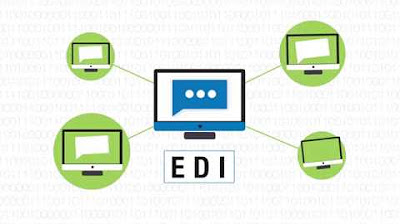What is EDI? A painless way to learn about EDI...
Summary
TLDRElectronic Data Interchange (EDI) is a critical tool for large retailers to manage orders and pay vendors efficiently. Since the 1960s, the evolution of commerce communication systems has led to the development of EDI standards like X12 in North America and EDIFACT in Europe. Despite its potential to reduce errors and increase profit, many businesses remain unaware of EDI's benefits. True Commerce offers an integrated EDI solution that streamlines processes, reduces manual data entry, and improves inventory management, ultimately enhancing a company's competitiveness. Their end-to-end platform simplifies EDI adoption, saving businesses up to 50% over traditional solutions.
Takeaways
- 📈 EDI (Electronic Data Interchange) is crucial for large retailers to manage orders and pay vendors efficiently.
- 🔄 Throughout history, communication systems have been key to successful commerce, evolving from land convoys to modern EDI systems.
- 💼 By the 1960s, large companies started using proprietary computer systems to exchange invoices electronically.
- 📚 In the 1980s, ANSI published X12 standards for EDI in North America, and Europe developed EDIFACT.
- 🌐 EDI improves speed, accuracy, and security in trade communications.
- 🤔 Many businesses are unaware of EDI and could benefit from adopting it.
- 📑 EDI covers hundreds of document types for transactions between vendors and suppliers.
- 📊 Without EDI, businesses risk inefficiency, errors, and revenue loss.
- 🔗 An integrated EDI solution automates order processing and error checking within accounting or ERP systems.
- 🔒 Implementing EDI requires four components: EDI translator, data mapping, secure transmission network, and support/maintenance.
- 💡 TrueCommerce offers an end-to-end EDI platform that simplifies the process and can save up to 50% over traditional solutions.
Q & A
What does EDI stand for?
-EDI stands for Electronic Data Interchange.
How does EDI help in managing orders and paying vendors?
-EDI helps maximize efficiency and minimize errors by automating the exchange of business documents between trading partners.
What are the historical developments in trade communication mentioned in the script?
-The script mentions the evolution from land convoys and relay stations on horseback, to trade routes and light towers at sea, to telegraphs and railways, and then to telex and telephone.
When did large companies start using computer systems for exchanging invoices?
-Some large companies began using proprietary linked computer systems to exchange invoices by the mid-1960s.
What is the American national standard for EDI?
-The American national standard for EDI is the X12 standard, published by the American National Standards Institute in the early 1980s.
What is the European equivalent to the X12 standard?
-The European equivalent to the X12 standard is EDIFACT (Electronic Data Interchange For Administration, Commerce and Transport).
Why might businesses be unaware of EDI?
-Nearly one-third of businesses in North America may be unaware of EDI due to lack of knowledge about its benefits or the complexity of implementing it.
How does EDI improve the processing of transactions like purchase orders?
-EDI increases speed and accuracy by reducing the manual retyping of data, thus reducing errors and processing time.
What are the potential risks for a business without EDI capabilities?
-Without EDI, a business risks loss of revenue from chargeback penalties, processing delays, loss of reputation, and credit with customers.
What are the four components required for a fully integrated EDI solution?
-The four components are an EDI translator, data mapping, a secure and reliable trading network, and support and maintenance.
What benefits can a business expect from implementing an EDI system?
-Benefits include reduced manual data entry, saving on chargeback penalties, streamlining inventory management, speeding time to market delivery, increasing productivity without increasing staff, and improving recordkeeping processes.
How can TrueCommerce EDI Solutions help businesses with EDI?
-TrueCommerce provides end-to-end EDI solutions that simplify the process, potentially saving customers 30 to 50% over traditional EDI solutions, and supports companies of all sizes with dynamic EDI solutions.
Outlines

This section is available to paid users only. Please upgrade to access this part.
Upgrade NowMindmap

This section is available to paid users only. Please upgrade to access this part.
Upgrade NowKeywords

This section is available to paid users only. Please upgrade to access this part.
Upgrade NowHighlights

This section is available to paid users only. Please upgrade to access this part.
Upgrade NowTranscripts

This section is available to paid users only. Please upgrade to access this part.
Upgrade Now5.0 / 5 (0 votes)





